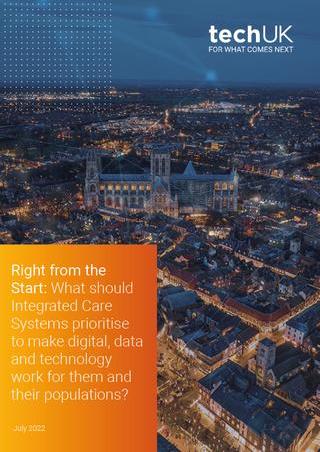Freshwave: Delivering transformative connectivity infrastructure for smart cities
We are entering a new age of communication, where everything will be connected to everything. New technologies like 5G will enable up to 1 million devices per square kilometre to connect, generating 282EB of data per month in 2027. This traffic growth includes the uptake of technologies like augmented and virtual reality, automated vehicles, massive Internet of Things (IoT), industry 4.0 and smart city use cases, which will mainly be deployed towards the end of the forecast period.
This new phase in the digital age will focus heavily on interconnectivity, automation, machine learning, and real-time data. Telecom industry analysts estimate that around 14 times more digital infrastructure will be required to ensure this interconnectivity and cope with the exponential growth of data that’s needed to successfully integrate the physical and digital worlds.
Across the country, local authorities and infrastructure providers face common as well as region-specific challenges to deploy this next-generation digital infrastructure. Complex policy requirements, prioritisation of capital investment, long-term financial sustainability assurance, and limited access to resources are all factors that must be considered. Public-private partnerships supported by central government are helping to tackle challenges at a local level to unlock the delivery of tomorrow’s infrastructure.
Cutting across traditional silos
The development of a holistic approach could arguably be the biggest enabler of collaboration between the private and the public sector. When it comes to local authorities, despite Digital, Highways, Procurement, Planning, Housing and Regeneration teams working on different initiatives, their work is interrelated. Therefore, developing a streamlined process and centralised data platform could help the different stakeholders to avoid effort duplication. It would also help manage more seamless engagement with infrastructure providers and service operators, saving everyone time and resources.
Delivering transformative infrastructure also requires local authorities to share their learnings with their peers to replicate best practices and avoid making the same mistakes. The Department for Digital, Culture Media and Sport, through the Digital Connectivity Infrastructure Accelerator, has created a web portal with digital toolkits to help with this. It contains best practices, template agreements, streamlined processes, and access to a group of experts that can help local authorities, infrastructure and service providers to accelerate the deployment of digital infrastructure by working in a more collaborative way.
Shareable infrastructure and multi-purpose assets
A city is an ever-changing environment constantly evolving to meet the needs of the local community. Local authorities know that without the correct infrastructure in place, it isn’t possible to have a smart city and an essential part of this is future-proof connectivity infrastructure. The need for this level of connectivity is redefining multiple aspects of a city, including their planning policies, and the use of their assets.
Local authorities are embracing the fact that their assets can be multi-purpose; lampposts, CCTV columns, traffic signs, bus shelters, street cabinets, fibre ducts, and public buildings can all do more than one job. For instance, we’re increasingly seeing lampposts hosting 4G and 5G low-powered cellular radio or small cells, Wi-Fi access points, smart sensors, and electric vehicle charging points; and bus shelters being transformed into communication hubs. This approach aims to reduce the clutter in the public realm, whilst still tackling the connectivity issues of the community.
Likewise, infrastructure providers have started to design shareable infrastructure that can be used by more than one service provider, as opposed to serving only a single purpose. Vendors are working on integrating multiple technologies into single devices rather than having dedicated equipment for specific technologies. This new approach reduces the time and cost of deployment considerably.
Overall, digital connectivity will become the underlying fabric of an entire ecosystem of fully connected intelligent sensors and multipurpose assets, the value of which lies not in what it is, but what it will enable. And having the correct infrastructure in place will be key to this in the smart cities of the future.
The techUK podcast: Innovation in place-based care
In this episode we explore the concept of ‘place’ in care, the principles behind it, the impact of Covid-19 on care delivery, prospects for innovation following the introduction of Integrated Care Systems, examples of industry best practice, and where listeners can go to learn more about ‘place’ and innovation in care.
We were joined by Helena Zaum (Social Care Lead at Microsoft and Chair of techUK’s Social Care Working Group), Scott Cain (Associate at the Connected Places Catapult) and Hannah Groombridge (Healthcare Engagement Manager at Person Centred Software).
This discussion forms part of techUK’s Digital Place Week 2022 activity and features on our recently-launched Social Care Innovation Hub.

Read techUK's latest flagship report, released on Thursday's 'Health and Wellbeing' day:
Right from the start: What should Integrated Care Systems prioritise to make digital, data and technology work for them and their populations?


